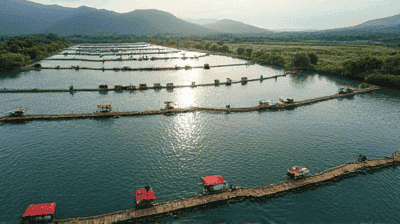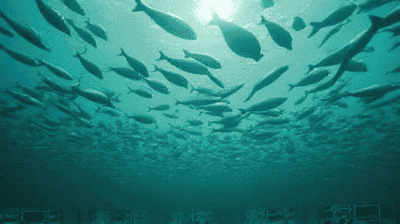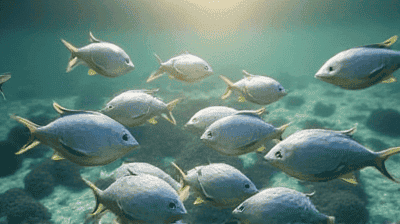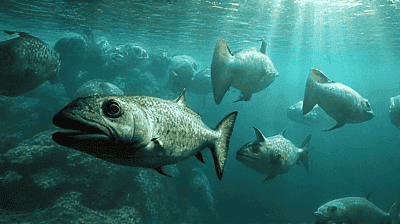The Future of Fishing: Can Sustainable Aquaculture Feed 10 Billion People?
The global population is expected to reach approximately 10 billion people by 2050, putting immense pressure on our food systems to provide adequate, nutritious food for all. One promising solution to this challenge lies in sustainable aquaculture, the farming of fish and other aquatic organisms. As wild fish stocks decline due to overfishing and environmental degradation, aquaculture presents an opportunity to meet the growing demand for seafood while minimizing environmental impact.
Understanding Aquaculture
What is Aquaculture?
Aquaculture involves the cultivation of aquatic animals and plants in controlled environments, including freshwater and marine settings. It encompasses a wide range of practices, from small-scale subsistence farming to large industrial operations. Common species raised in aquaculture include:
- Fish: Such as salmon, tilapia, and catfish.
- Shellfish: Including shrimp, oysters, and clams.
- Algae: Used both as food and for biofuel production.
Aquaculture has grown rapidly over the past few decades, accounting for nearly half of the fish consumed globally. The sector is expected to continue to expand as the demand for seafood increases and wild fisheries face increasing pressures.
The Importance of Sustainable Aquaculture
Sustainable aquaculture refers to practices that minimize environmental impact while maximizing production efficiency and social equity. Key principles of sustainable aquaculture include:
- Resource Efficiency: Using resources like water and feed in a responsible manner to reduce waste and environmental impact.
- Ecosystem Conservation: Ensuring that aquaculture practices do not harm surrounding ecosystems, including wild fish populations and coastal habitats.
- Social Responsibility: Prioritizing the well-being of local communities, ensuring fair labor practices, and contributing to food security.
By adhering to these principles, sustainable aquaculture has the potential to play a significant role in feeding a growing population while preserving our oceans and freshwater systems.
The Potential of Sustainable Aquaculture
Meeting Global Seafood Demand
As wild fish stocks decline, aquaculture offers a viable means of meeting the increasing global demand for seafood. The FAO estimates that fish consumption is projected to reach 200 million tons by 2030, driven by population growth and increased per capita consumption. Sustainable aquaculture can help fill this gap, providing a reliable source of protein for millions of people.
Nutritional Benefits of Fish
Fish is an essential part of the human diet, providing a rich source of high-quality protein, omega-3 fatty acids, vitamins, and minerals. Some of the key nutritional benefits of fish include:
- Heart Health: Omega-3 fatty acids found in fish help reduce the risk of heart disease by lowering blood pressure and cholesterol levels.
- Brain Development: Omega-3s are crucial for cognitive development during pregnancy and childhood.
- Nutritional Diversity: Incorporating fish into diets can help combat malnutrition in vulnerable populations, particularly in coastal and island communities where fish is a staple food source.
By providing access to nutritious seafood, sustainable aquaculture can contribute to improved public health and food security.
Reducing Pressure on Wild Fisheries
Overfishing has led to significant declines in many wild fish populations, threatening marine ecosystems and the livelihoods of millions of people who depend on fishing. Sustainable aquaculture can help alleviate this pressure by:
- Supplementing Wild Catches: Providing an alternative source of seafood reduces the need for fishing from already stressed populations.
- Restoration Efforts: Some aquaculture operations focus on breeding and releasing juvenile fish into the wild, helping to rebuild depleted stocks.
By supporting sustainable aquaculture, we can work towards healthier oceans and resilient fishing communities.
Environmental Implications of Aquaculture
Potential Environmental Impacts
While sustainable aquaculture offers numerous benefits, it also comes with potential environmental impacts that must be managed carefully:
- Water Pollution: Fish farming can lead to nutrient runoff, antibiotic resistance, and waste accumulation, which can harm nearby ecosystems and water quality.
- Habitat Destruction: Some aquaculture practices, particularly those involving ocean net pens or extensive coastal development, can damage sensitive habitats such as mangroves and coral reefs.
- Invasive Species: The introduction of non-native species for aquaculture can disrupt local ecosystems, leading to negative consequences for native species.
Minimizing Environmental Impact
To ensure that aquaculture remains sustainable, it is essential to adopt best practices that minimize environmental impacts. Strategies include:
- Integrated Multi-Trophic Aquaculture (IMTA): This approach involves cultivating multiple species at different trophic levels in the same system, which can help recycle nutrients and reduce waste. For example, growing shellfish or seaweed alongside fish can absorb excess nutrients, improving overall water quality.
- Land-Based Systems: Using recirculating aquaculture systems (RAS) allows for fish farming in controlled environments with minimal water usage and effluent discharge. This closed-loop approach can significantly reduce the environmental footprint of aquaculture.
- Sustainable Feed Options: Developing feed alternatives that reduce the reliance on fishmeal and fish oil, such as insect protein, algae, and plant-based ingredients, can minimize pressure on wild fish stocks and improve the sustainability of aquaculture operations.
By implementing these practices, the aquaculture industry can minimize its environmental impact while continuing to meet the growing demand for seafood.
Challenges Facing Sustainable Aquaculture
Economic and Financial Barriers
While sustainable aquaculture has the potential to be a viable solution to food security, several economic challenges hinder its growth:
- High Initial Investment: Setting up sustainable aquaculture operations, particularly land-based systems, often requires significant capital for infrastructure and technology.
- Market Access: Small-scale aquaculture producers may struggle to access larger markets, limiting their ability to compete with industrial operations.
Regulatory Hurdles
Regulatory frameworks governing aquaculture practices can vary significantly from country to country, leading to inconsistencies in sustainability standards. Some of the challenges include:
- Lack of Standardization: The absence of unified global standards for sustainable aquaculture can make it difficult for consumers to make informed choices and for producers to access exports.
- Bureaucratic Barriers: Complicated regulatory processes can hinder the establishment of new aquaculture ventures, particularly for small-scale farmers.
Social and Cultural Factors
In some regions, traditional fishing practices and cultural beliefs may pose challenges to the adoption of aquaculture. Concerns about environmental impacts, loss of livelihoods, and changes to local ecosystems can lead to resistance from communities that have relied on fishing for generations.
Innovations in Sustainable Aquaculture
Advances in Technology
Technological innovations are playing a vital role in the development of sustainable aquaculture. Key advancements include:
- Aquaculture Analytics: The use of big data and analytics can improve decision-making in aquaculture operations, optimizing feeding regimes, growth rates, and environmental monitoring.
- Automated Systems: The implementation of automated feeding and monitoring systems can improve operational efficiency and reduce waste in aquaculture ventures.
- Genetics and Breeding Programs: Selective breeding for disease-resistant and fast-growing species can enhance the sustainability and productivity of aquaculture operations.
Knowledge Sharing and Education
Enhancing education and knowledge sharing among aquaculture practitioners can promote best practices and innovation. Initiatives may include:
- Training Programs: Providing training for small-scale farmers on sustainable aquaculture practices can increase their capacity to produce seafood responsibly.
- Research Collaborations: Partnering with universities and research institutions can foster innovation in aquaculture practices, improving sustainability and productivity.
Consumer Awareness and Demand
Increasing consumer awareness of sustainable seafood options plays a critical role in driving demand for responsibly sourced products. Efforts to boost consumer engagement may include:
- Labeling and Certification: Clear labeling and certification schemes can help consumers identify sustainably produced seafood, encouraging informed purchasing decisions.
- Community Outreach: Programs that promote the benefits of sustainable aquaculture to local communities can help build support for responsible practices and enhance consumer demand.
The Role of Policy in Supporting Sustainable Aquaculture
Government Commitment
Governments play a crucial role in fostering sustainable aquaculture through supportive policies and regulatory frameworks. Key areas of focus include:
- Financial Support: Offering grants, subsidies, and low-interest loans to aquaculture producers can help reduce the financial burden of transitioning to sustainable practices.
- Research and Development: Investing in research initiatives focused on aquaculture innovations can spur advances in sustainability and productivity.
International Collaboration
Given the global nature of seafood trade and aquaculture, international collaboration is essential to promote sustainable practices. Such collaborations may include:
- Global Standards: Working towards unified global standards for sustainable aquaculture can help create a level playing field for producers and promote consumer trust.
- Collaborative Research: Encouraging cross-border research initiatives to address common challenges in aquaculture can enhance knowledge sharing and innovation.
The Future of Sustainable Aquaculture
Prospects for Feeding 10 Billion People
Sustainable aquaculture has the potential to significantly contribute to global food security and help meet the demand for seafood as the world population grows. By focusing on resource efficiency, minimizing environmental impact, and prioritizing social equity, the aquaculture sector can play a pivotal role in nourishing communities around the world.
A Holistic Approach
The future of aquaculture requires a holistic approach that brings together various stakeholders, including farmers, researchers, policymakers, and consumers. By working collaboratively and embracing sustainability as a guiding principle, we can create food systems that are resilient, equitable, and capable of supporting future generations.
Conclusion
Sustainable aquaculture offers a promising solution to the challenges of feeding a growing global population while protecting our oceans and freshwater resources. By adopting innovative practices, enhancing consumer awareness, and promoting supportive policies, we can ensure that aquaculture remains a viable and sustainable source of seafood for years to come.
As we look to the future, investing in sustainable aquaculture is not only an opportunity to protect our planet and water resources but also a means to nourish the world. With thoughtful stewardship and a commitment to sustainability, we can help secure a food system that benefits both people and the environment, paving the way for a healthier and more productive future.



